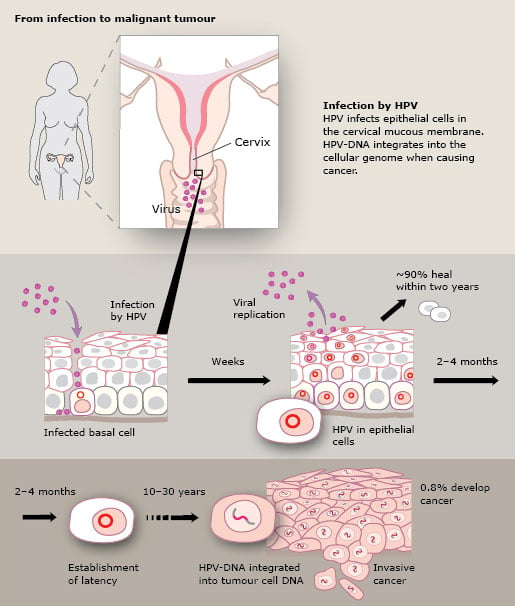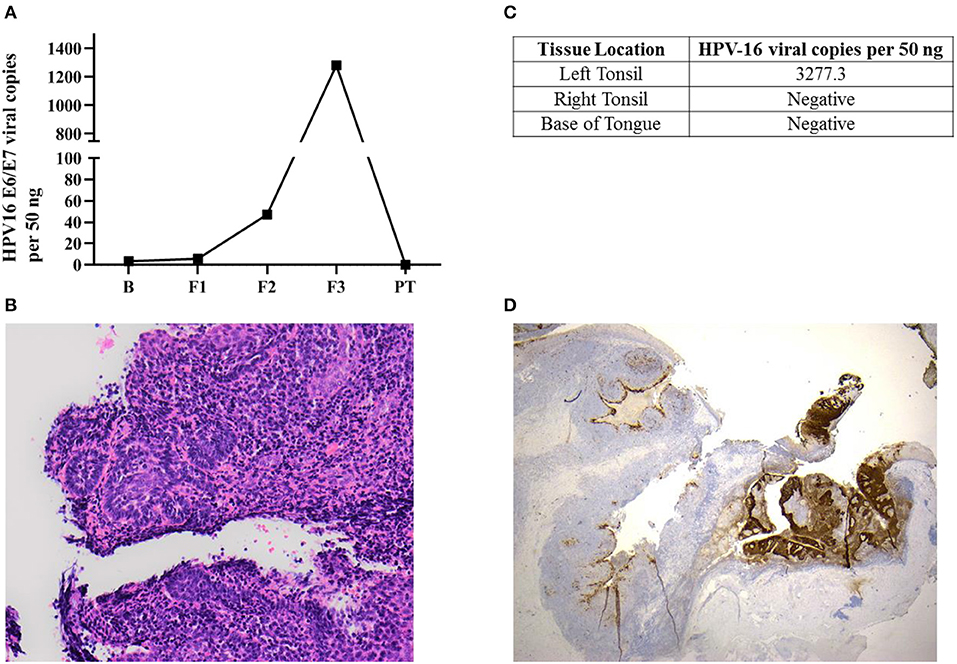It was not too many years ago when we celebrated the 200th anniversary of Edward Jenners first smallpox vaccination in 1796. Human papillomavirus HPV is a small double-stranded DNA virus that commonly infects humans.
 The 2008 Nobel Prize In Physiology Or Medicine Illustrated Presentation Nobelprize Org
The 2008 Nobel Prize In Physiology Or Medicine Illustrated Presentation Nobelprize Org
Little did CCR researchers Doug Lowy MD and John Schiller PhD know in the 1990s that their studies of two cancer-causing genes would lead to the first commercially available vaccine against the two deadliest forms of the cancer-causing human papillomavirus HPV.

When was hpv discovered. University of Queensland researcher and 2006 Australian of the year Professor Ian Frazer first started developing a vaccine for HPV in the 1990s along with. Others may only find out once theyve developed more serious problems from HPV such as cancers. The development of vaccines continued at a fairly slow rate until the last several decades when new scientific discoveries and technologies led to rapid advances in virology molecular biology and vaccinology.
How common is HPV and the health problems caused by HPV. Women may find out they have HPV when they get an abnormal Pap test result during cervical cancer screening. We also discovered that breast cancer with HPV-16 always co-exists with increased Chrysotile Asbestos deposits and the outline of the breast cancer positive area is a relatively smooth and round or oval shape and breast cancer with HPV-18 always co-exists with.
Health Protection Immunisation and vaccination Ten years ago the UK introduced the human papilloma virus HPV vaccination into the national routine programme which is offered to adolescent girls. The breakthrough came in the early 1980s when Dr. The incidence of high-risk human papillomavirus HPV-driven throat cancers is on the rise in developed countries and unfortunately it is often discovered only when it is more advanced with.
It took more than 100 years to identify the culprit. Harald zur Hausen pursued this idea for over 10 years by searching for different HPV types a search made difficult by the fact that only parts of the viral DNA were integrated into the host. Today these powerfully effective vaccines have slashed HPV infection rates by 64 percent in the United States.
PROGRESS AGAINST HPV-ASSOCIATED CANCERS RESEARCH Oral cancers have been steadily on the rise since 1973. The Times first mentioned HPV on Feb. HPV vaccines are used to prevent HPV infection and therefore cervical cancer.
A year later the team cloned HPV 16 and HPV 18 from patients with cervical cancer. Less than 04 of cases were found as a variety of combination of HPV-16 HPV-18. The natural history of human papillomavirus infection.
Although the majority of sexually active adults will be infected with HPV at least once in their lives it is sexually active women less than 25 years of age who consistently have the highest rates of infection. Human papillomavirus HPV is the most common newly diagnosed sexually transmitted infection in the United States. Good evidence supports that vaccination of large percentage of people within a population decreases rates of HPV infections with part of the benefit from herd immunity.
HPVs role in cervical cancer seemed possible as other viruses in the HPV family were already known to cause warts. In that same year there were 13. In the 1980s researchers at the German Cancer Research Center found types of HPV in many cervical tumors.
Zur Hausen and his team found novel HPV-DNA in cervical cancer biopsies thus discovering the tumorigenic virus type HPV 16 in 1983. Some types are recommended in the United States for women and men who are 926 years of age and are approved for those who are 2745 years of age. The oncogenic characteristics of HPV derive from the oncoproteins E6 and E7 that act inhibiting p53 and pRB tumor suppressors.
HPV the human papillomavirus is the cause of virtually all cervical cancers so this is a truly remarkable feat. CDC estimates that there were 43 million HPV infections in 2018. While the human papillomavirus HPV had been detected in these cancers for sometime its role remained unclear.
